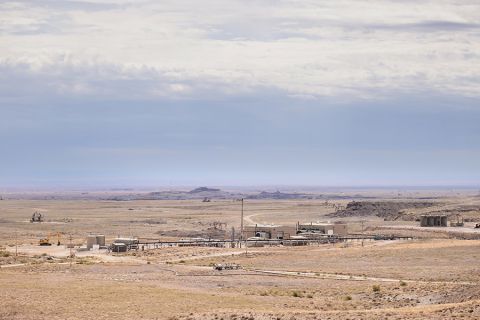Faced with the challenge of filling thousands of jobs as the energy industry’s older employees retire, the oil and gas sector has teamed up with Houston Community College (HCC) to train the next crew. HCC recently announced it will build a Global Oil and Gas Drilling Training Center. Touted as a “premier source for retainable, promotable, and safety-conscious entry-level rig crew members,” the center aims to create a drilling environment similar to what workers – such as offshore roustabouts and onshore roughnecks – will experience in the real world, HCC said in a news release. The center, which will be located on HCC’s northeast campus, will feature a rig safety and skills laboratory called RIG-ONE. There, program participants will gain experience working around equipment such as cranes, forklifts, and air tuggers to gain pipe and cargo handling skills, the release said. Those attending training at the center also will gain knowledge about material handling, tank cleaning, confined space entry, routine maintenance, and hand tools. Safety will be a key component of the program. Aligned with the International Association of Drilling Contractors (IADC) Knowledge, Skills, and Abilities profiles, HCC said basic first aid, helicopter underwater evacuation training, and firefighting, among other safety procedures will be covered. The center also will offer IADC-accredited courses, and future plans could include specialized training in the areas of electronics, hydraulics, mechanics, and coursework targeting specific oil and gas jobs such as drillers and floorhands. There is also talk about making available a two-year drilling associate degree. All of this is good news for the industry, which is already experiencing staff shortages in certain areas. And based on what experts predict, the situation could worsen if efforts are not taken to lure more qualified workers to the field. During a recent Deloitte webcast, Alan Richard, director of Deloitte’s financial advisory service, pointed out that labor has become a major issue on megaprojects. Using the LNG boom in Australia as an example, Richard said the demand for skilled workers doubled in the mining industry from 2006 to 2011. As a result, the demand for talent sent wages up 35%. The US, he said, is now experiencing a similar trend as the shale boom creates the need for more workers not only in the upstream sector, but also in the midstream and downstream sectors. “The drilling industry is faced with the challenge to bring 24,000 new hires on board within the next few years,” Diamond Offshore Drilling CEO Larry Dickerson said in the HCC news release. “Diamond Offshore and other drilling contractors have worked with HCC education experts over the past year to create a program that produces better trained candidates for the drilling industry of the future.” But anyone interested in enrolling at the center will have to wait about two more semesters. Groundbreaking for the new facility and lab is set for fall 2013, with initial training classes expected to become available in spring 2014. To learn more about the center, visit http://sites.hccs.edu/corporatecollege/training-solutions/drilling/. Contact the author, Velda Addison, at vaddison@hartenergy.com.
Recommended Reading
EY: How AI Can Transform Subsurface Operations
2024-10-10 - The inherent complexity of subsurface data and the need to make swift decisions demands a tailored approach.
TGS Extends Appalachian Basin 3D Seismic Survey
2024-10-23 - TGS said the survey, which is positioned up-dip from the Utica condensate and gas trend, will target 276 sq miles of “key” formations in the Appalachian Basin.
Breakthroughs in the Energy Industry’s Contact Sport, Geophysics
2024-09-05 - At the 2024 IMAGE Conference, Shell’s Bill Langin showcased how industry advances in seismic technology has unlocked key areas in the Gulf of Mexico.
Darbonne: The Geologic, the Man-made and the Political of Uinta Basin Outcrops
2024-10-01 - The oily western Uinta features layers of sedimentary deposits on view for visitors, mostly uninterrupted by man-made features but having an unseen pall of federal interference.
Now, the Uinta: Drillers are Taking Utah’s Oily Stacked Pay Horizontal, at Last
2024-10-04 - Recently unconstrained by new rail capacity, operators are now putting laterals into the oily, western side of this long-producing basin that comes with little associated gas and little water, making it compete with the Permian Basin.





